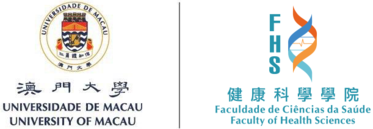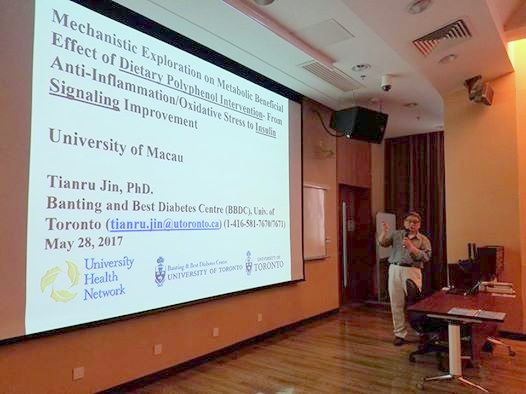| Talk title | Mechanistic exploration on the metabolic beneficial effect of dietary polyphenol intervention-From anti-inflammation/oxidative stress to insulin signaling improvement |
| Speaker | Prof. Tianru JIN Professor, Department of Physiology, University of Toronto |
| Date & Time | 29 May 2017 (Monday) 10:00-11:00 |
| Venue | Room G003, E12 Building (University of Macau) |
| Abstract | Intensive studies have been conducted during the last decade on the function of dietary polyphenols (curcumin, anthocyanin and resveratrol are the three most studied ones), as those chemicals are relatively safe and are able to target multiple organs, or systems, or cell lineages. The lack of defined receptor/s for them and the lower bioavailability of them, however, have created enormous difficulty on the mechanistic exploration in the field. We and others have previously shown the effect of dietary curcumin intervention on attenuating body weight gain, improving insulin sensitivity and glucose disposal in high fat diet (HFD) fed mouse model, and have attributed those effects to the anti-inflammation and anti-oxidative stress features of this compound. Recently, we have demonstrated that in a short-term dexamethasone induced insulin resistance mouse model, short-term curcumin administration was still able to improve insulin signaling, suggesting that the insulin signaling improvement effect of curcumin is not necessary to be secondary to its anti-inflammation or body weight lowering effect. We have to date, identified two molecules that may mediate the effect of curcumin intervention on insulin signaling improvement. A) We found that in vitro and short-term in vivo curcumin treatment increased the expression of fibroblast growth factor 21 (Fgf21). This pluripotent hepatic hormone can improve insulin signaling and has been under several clinical trials for metabolic disorders. Mechanistically, curcumin stimulates Fgf21 gene transcription in PPARα dependent manner. Curiously, hepatic Fgf21 over-expression and Fgf21 resistance can be induced by HFD consumption, while concomitant curcumin intervention attenuated HFD-induced Fgf21 over-expression and improved Fgf21 sensitivity in hepatocytes. B) We also found that curcumin mimics the function of insulin in stimulating the expression of the hepatic lipogenic transcription factor ChREBP. Both insulin and curcumin were shown to stimulate ChREBP expression in Akt-independent but MEK/ERK dependent manner, involving the inactivation of the transcriptional repressor, the POU homeodomain protein Oct-1. Furthermore, with the chemical inhibitor and a genetically knockout mouse model, we demonstrated the involvement of p21-activated protein kinase 1 (Pak1) in mediating the function of both insulin and curcumin. We hence have identified a novel signaling cascade Pak1/MEK/ERK/Oct-1 that mediates the physiological function of insulin and the dietary polyphenol curcumin in regulating hepatic ChREBP production. Together our investigations have created new avenues for mechanistic exploration of the metabolic beneficial effect curcumin and we suggest that knowledge generated in our current studies can be applied to other dietary polyphenol studies. Finally, I will briefly present our view and perspectives on curcumin and other dietary polyphenol research in the metabolic field. |


